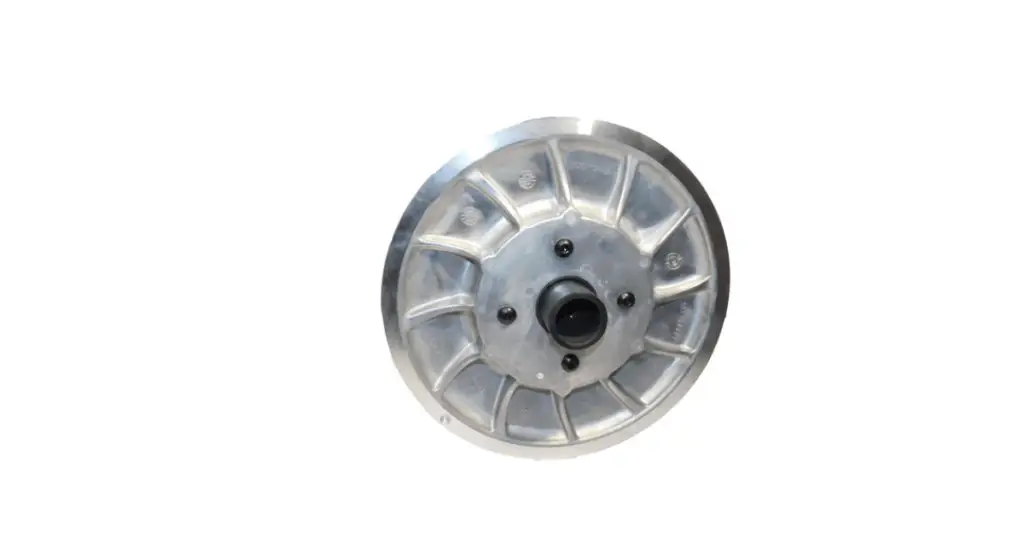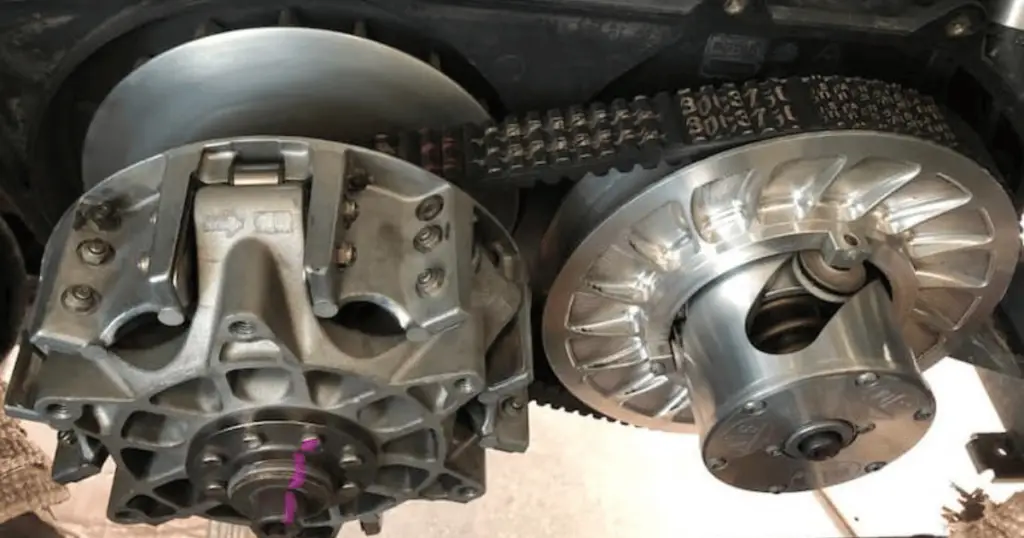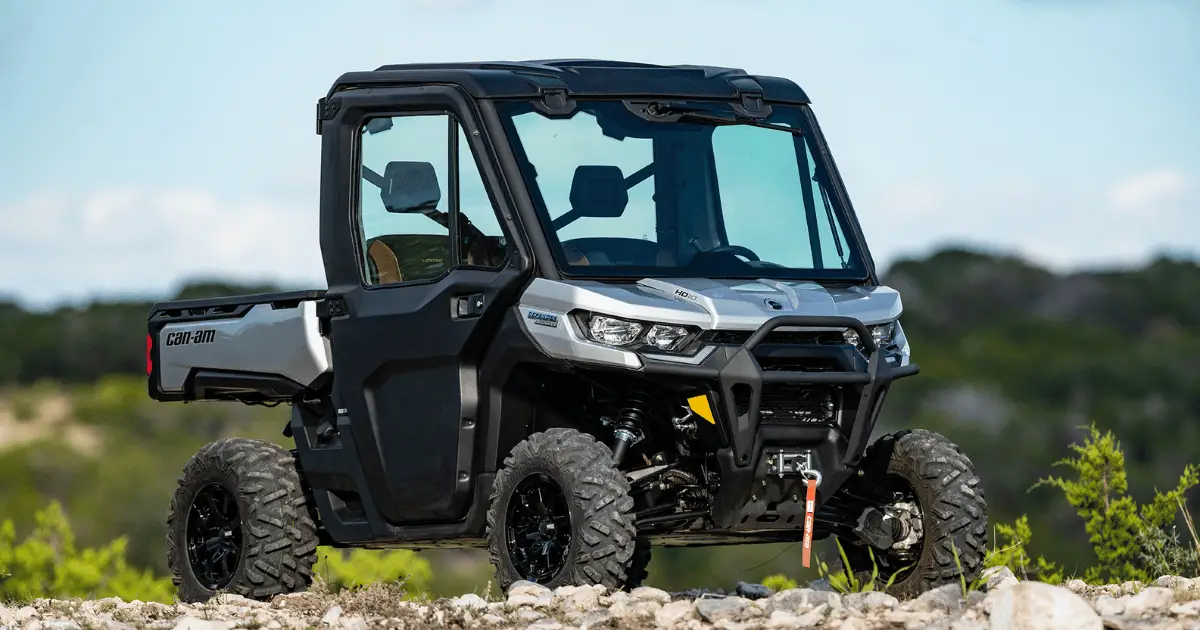So, you’re dealing with Can-Am Defender clutch issues on your off-road vehicle? Can-Am Defender clutch problems are unfortunately not uncommon, and can really throw a wrench in your off-roading adventures, leaving you struggling with power delivery when you least expect it. This article is going to take you through the nitty-gritty of what typically goes wrong with the Can-am Defender’s clutch system
Read next: Can-Am Defender AC Problems: Common Issues and Solutions. From wear and tear to more complex mechanical hiccups, understanding these challenges could be the key to smoother rides and fewer surprises when you’re out conquering the trails. Buckle up, because you’re about to get the lowdown on keeping your Defender in top gear.
Understanding the Can-Am Defender’s Primary and Secondary Clutch System

Basic components of the Can-am Defender clutch
The Can-Am Defender’s clutch system is a crucial part of your off-road vehicle, allowing you to smoothly transfer power from the engine to the drivetrain. The primary components of this system include the clutch drive (or primary clutch), the driven clutch (or secondary clutch), the drive belt, clutch weights, and clutch rollers. The clutch drive connects to your engine, controlling when power is applied. The driven clutch then receives this power and transmits it to the transmission. Together with the belt, these components work harmoniously to deliver the necessary torque for your adventures.
How the Can-am Defender clutch functions
Your Can-Am Defender’s clutch operates on the principle of centrifugal force. When you rev up the engine, the primary clutch’s weights are forced outwards, causing the clutch to close and grip the drive belt tighter. As the RPMs increase, the belt rides higher on the primary clutch and lower on the secondary, effectively changing the gear ratio without the need for a traditional gearbox. Decreasing the throttle reverses this action, allowing for a seamless transition through varying terrains and driving conditions.
Regular maintenance requirements
Regular maintenance, including checking for belt wear and clutch problems, is key to keeping your Can-Am Defender’s clutch system in top condition. This involves inspecting the belt for wear and tear, checking the primary and secondary clutches for damage or debris, and ensuring all moving parts are well-lubricated. A well-maintained clutch will offer better performance and a longer life span, saving you from costly repairs or replacements down the road.
Common Symptoms of Can-am Defender Clutch Problems

Clutch slippage and performance issues
If you’re noticing a loss in acceleration or a lack of power in your Can-Am Defender, clutch slippage could be the culprit. This occurs when the clutch can’t grip the drive belt properly, often due to belt wear or improper adjustment, causing a disconnection between the power generated by the engine and the transmission.
Unusual noises during acceleration or deceleration
Keep an ear out for any strange noises, such as grinding or squealing, when you accelerate or decelerate. These can indicate a problem with the clutch components, such as worn bearings or damaged clutch surfaces, requiring your attention.
Difficulty shifting gears
While the Can-Am Defender doesn’t have traditional gears, you might still face difficulty in “shifting” or changing speed ranges due to clutch issues. If moving between high, low, neutral, or reverse feels rough or sticky, the clutch system may be to blame.
Burning smell emanating from the clutch area
A telltale sign of clutch issues is a distinctive burning smell coming from the clutch area. This could be a result of excessive friction and overheating, which means your clutch may be on the brink of failure and needs immediate attention.
Diagnosing Can-am Defender Clutch Issues
Steps for preliminary diagnosis
Begin by visually inspecting the clutch for any obvious signs of damage, like cracks or breaks. Listen for unusual noises while idling and during operation. Pay attention to how your Defender behaves during acceleration. These preliminary steps can give you a good indication of where the problem might lie.
Tools required for clutch inspection
To thoroughly inspect the clutch system, you’re going to need some tools. A clutch puller, a torque wrench, and a belt tension gauge are essential for disassembling and testing the components of your clutch. Having the correct tools at your disposal will allow for a more accurate diagnosis.
Interpreting diagnostic results
After using the tools to inspect and test your clutch, interpret the results carefully. Look for any discrepancies in belt tension, alignment issues, or wear patterns on the clutch sheaves. These findings will guide you on whether a simple adjustment, part replacement, or more extensive repairs are necessary.
Slipping Clutch: Causes and Solutions
Identifying worn clutch components
Worn clutch components, including the secondary clutch and clutch springs, are the usual culprits behind a slipping clutch in Can-Am Defenders. This includes worn-out weights, springs, or a glazed drive belt. By identifying the worn parts, you can determine if they need adjustments or replacements.
Adjusting the clutch to fix slippage
Sometimes, a simple adjustment can remedy slippage. This may involve tightening the belt or adjusting the weights in the primary clutch to alter how and when clutch engagement occurs.
When to consider a clutch replacement
If adjustments don’t cut it and the components, like the drive belt or clutch linings, show significant wear, you’ll need to consider a clutch replacement to restore proper function.
Clutch Noise Issues: Troubleshooting and Fixes
Differentiating between normal and abnormal clutch sounds
Clutches make noises; that’s normal. However, distinguishing between the standard whirring and potentially problematic sounds is essential. Any loud noise or unusual sounds beyond typical operation in the Can-Am Defender’s clutch should be investigated..
Possible reasons behind the noises
Several issues could cause abnormal noises. It might be as benign as a small rock caught between the clutch components or something more serious like worn-out bearings or misalignments causing undue friction.
Fixes for common clutch-related sounds
Removing debris or replacing worn components are the usual fixes for noise issues. Make sure your clutch is correctly aligned and balanced to prevent future noises and potential damage.
Clutch Engagement Problems in a Can-am Defender
Hard clutch pedal: Causes and adjustments
A hard clutch pedal indicates that something is awry with the mechanism. It could be down to a need for lubrication or an adjustment in the clutch linkage. Get into the habit of checking for obstructions or tightness in the system.
Spongy or soft clutch pedal: Diagnosis and correction
Conversely, a spongy or soft clutch pedal might suggest air in the hydraulic line or worn springs. Bleeding the hydraulic system or replacing the springs should restore proper engagement.
Troubleshooting delayed or jerky engagement
Delayed or jerky engagement can stem from several issues, including improper belt tension or worn clutch components. Proper diagnosis will allow you to pinpoint whether a simple adjustment or a more involved repair is necessary.
Replacing the Clutch on a Can-am Defender

When is a full clutch replacement necessary?
A full clutch replacement becomes necessary when the system is extensively worn or damaged, and simple repairs or adjustments won’t suffice. This could be due to age, overuse, or a lack of maintenance.
The step-by-step process of clutch replacement
To replace the Can-Am Defender clutch, including the primary and secondary clutches, you’ll need to remove the side panel, take out the old clutch components, install the new clutch kit, and ensure everything is properly aligned and torqued according to the manufacturer’s specifications. Taking photos or notes during disassembly can be a huge help when putting the new clutch in.
Ensuring proper break-in for new clutches
After installing a new clutch, a proper break-in period is crucial to ensure its longevity and performance. Typically, this means taking it easy on your Defender for the first few hours of operation, allowing the new components to bed in correctly.
Preventing Future Clutch Problems in The Can-am Defender
Driving habits that reduce clutch wear
Modifying your driving habits can go a long way in reducing clutch wear. Avoid excessive idling with the clutch engaged, don’t use the clutch to hold the Defender on an incline, and try to keep your RPMs within the ideal range for the conditions you’re facing.
The importance of using OEM parts for replacements
Using OEM parts for replacements, such as clutch kits and clutch components, ensures your Can-Am Defender’s clutch system remains as reliable as the day it rolled off the factory floor. These parts are designed specifically for your vehicle and typically come with a guarantee of quality and compatibility.
Education on clutch system care for Can-am Defender owners
Educating yourself on the inner workings and care of your clutch system can save you from headaches down the road. Understanding the signs of wear, knowing how to maintain it, and recognizing when professional service is required will help keep your clutch in prime condition and your Defender running smoothly.
Routine check-ups and their importance
Regular check-ups of your clutch system are vital. They allow you to catch issues early on before they escalate into major problems. These check-ups include inspections of the belt, clutches, and related hardware, ensuring everything is in proper working order.
Best practices for maintaining clutch health
Maintaining the health of your clutch involves several best practices. Always keep the clutch components clean and free of debris, ensure the belt is properly aligned and tensioned, and avoid excessive idling which can cause premature wear. Moreover, keep an eye on the condition of the rollers, weights, and springs within the clutch assembly.
Recommended service intervals
Can-Am recommends service intervals based on hours of operation or mileage, which you can find in your owner’s manual. Adhering to these intervals is crucial for ongoing clutch efficiency and reliability. Generally, a thorough clutch inspection should be performed annually or after every 1,000 miles of riding, whichever comes first.

Leave a Reply